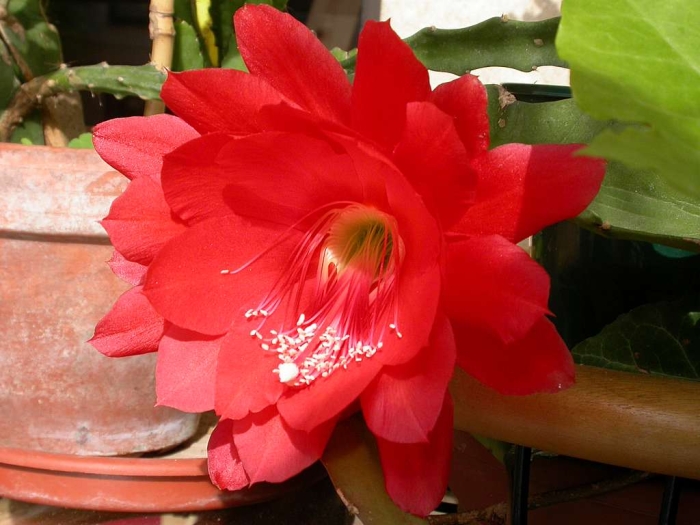Orchid Cactus
(Disocactus ackermannii)
Orchid Cactus (Disocactus ackermannii)
/
/

Abrahami assumed
CC BY-SA 2.5
Image By:
Abrahami assumed
Recorded By:
Copyright:
CC BY-SA 2.5
Copyright Notice:
Photo by: Abrahami assumed | License Type: CC BY-SA 2.5 | License URL: https://creativecommons.org/licenses/by/2.0 | Uploader: No machine-readable author provided. Abrahami assumed (based on copyright claims). | Publisher: Wikimedia Commons |






















Estimated Native Range
Summary
Disocactus ackermannii, commonly known as Orchid Cactus, is an evergreen succulent native to the tropical rainforests of Mexico. It is an epiphytic plant, meaning it often grows on other plants or structures but is not parasitic. This cactus typically exhibits a sprawling or pendent habit, making it ideal for hanging baskets. The Orchid Cactus is renowned for its large, showy, scarlet flowers with greenish throats, which are funnel-shaped and can be 11–15 cm (4.3–5.9 in) in length and up to 15 cm (5.9 in) across. The striking filaments are red with a greenish base, and the flowering season occurs mainly in spring and early summer.
The Orchid Cactus is valued for its ornamental flowers and ease of care, making it a popular choice for indoor cultivation or sheltered outdoor environments in warmer climates. It is often used in hanging baskets or as a container plant to showcase its cascading form. In cultivation, it prefers bright, indirect light or partial shade and requires well-draining soil. While it can tolerate some drought, consistent moisture is important during the growing season. Overwatering or poor drainage can lead to root rot. It is generally free from serious pests and diseases but can be susceptible to mealybugs and fungal infections if conditions are too humid or wet.CC BY-SA 4.0
The Orchid Cactus is valued for its ornamental flowers and ease of care, making it a popular choice for indoor cultivation or sheltered outdoor environments in warmer climates. It is often used in hanging baskets or as a container plant to showcase its cascading form. In cultivation, it prefers bright, indirect light or partial shade and requires well-draining soil. While it can tolerate some drought, consistent moisture is important during the growing season. Overwatering or poor drainage can lead to root rot. It is generally free from serious pests and diseases but can be susceptible to mealybugs and fungal infections if conditions are too humid or wet.CC BY-SA 4.0
Plant Description
- Plant Type: Succulent
- Height: 2-4 feet
- Width: 2-4 feet
- Growth Rate: Moderate
- Flower Color: Pink, Red
- Flowering Season: Spring
- Leaf Retention: Evergreen
Growth Requirements
- Sun: Full Shade, Part Shade
- Water: Medium
- Drainage: Fast
Common Uses
Drought Tolerant, Low Maintenance, Potted Plant, Showy Flowers
Natural Habitat
Native to tropical rainforests of Mexico
Other Names
Common Names:
Scientific Names: , Disocactus ackermannii, Cactus ackermannii,
GBIF Accepted Name: Disocactus ackermannii (Lindl.) Barthlott